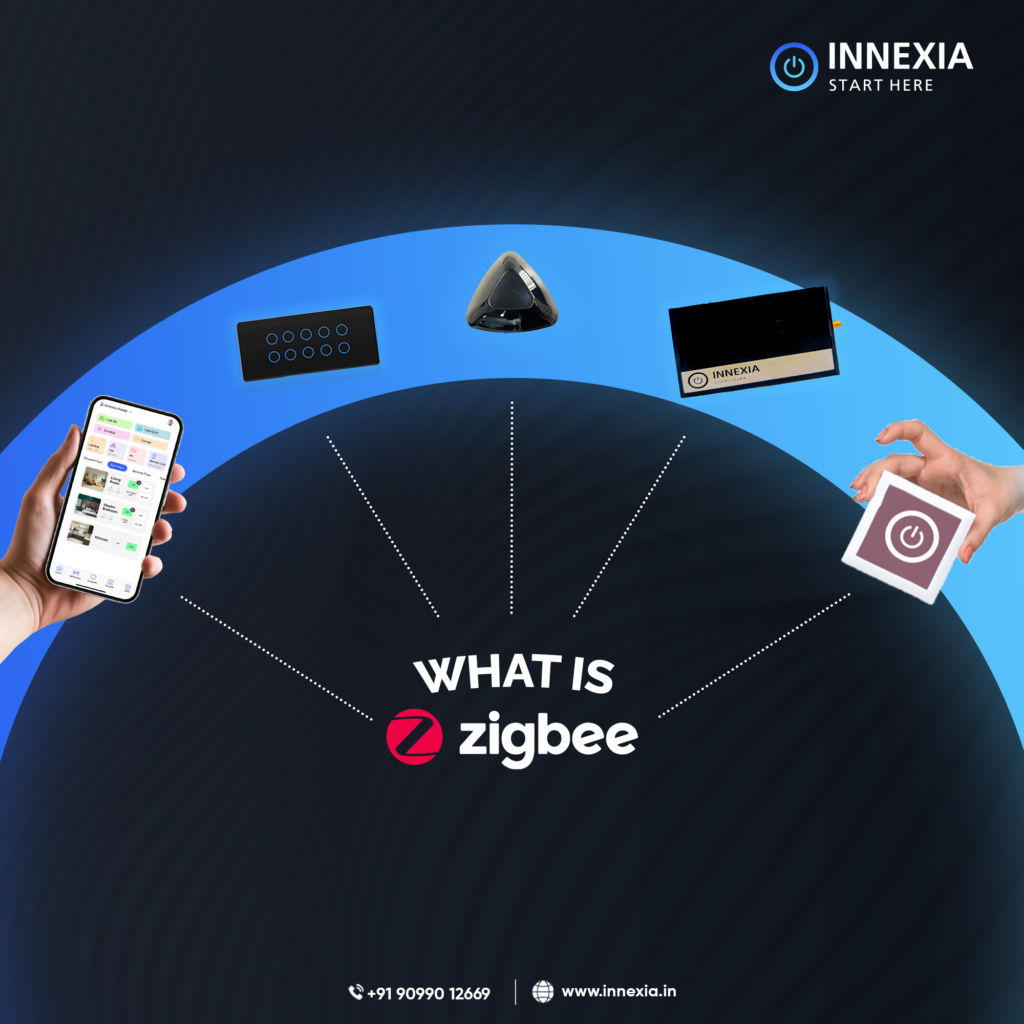In the world of the Internet of Things (IoT), various wireless communication protocols exist, but Zibgee Technology stands out for its unique advantages and diverse applications. ZigBee is a protocol that enables devices to connect and communicate wirelessly.
This article will explore what ZigBee is, its application areas, and the advantages that make it a key player in the IoT sector. If you’ve used smart devices, you might already be familiar with ZigBee.
What is ZigBee Technology?

ZigBee technology is a low-power, low-cost, short-range wireless standard that defines protocols for automating smart devices using lower data rates.
This leads to an important question: How does it work?
Here are the key features that set ZigBee apart from other technologies:
Low-Power Functionality
ZigBee-powered devices use minimal energy due to their low data transfer rates, extending battery life from months to years.
Efficient Mesh Networking
ZigBee employs mesh networking for node connections, enabling self-healing capabilities within the network. This enhances connectivity and ensures extended range, even in challenging environments.
Interoperable Standardization
Built on the IEEE 802.15.4 standard, ZigBee ensures effective compatibility between devices. This standard allows for seamless communication among ZigBee-powered devices from different manufacturers.
Robust Security
ZigBee incorporates 128-bit AES encryption to protect data transmissions and safeguard devices from unauthorized access.
The ZigBee Network Architecture
In a ZigBee network, there are three key types of device roles:
Coordinator: The coordinator, also known as the bridge, is the central device in the ZigBee network. It initializes the network, manages security, and stores information about the network structure. Each ZigBee network has only one coordinator.
Router: Routers play a crucial role in forwarding data packets within the network, enabling it to extend over long distances. They can also function as intermediary devices for other ZigBee devices.
End Device: These are the most basic devices in the ZigBee network. They communicate only with a single router or coordinator and do not forward data for other devices.
How Does ZigBee Work?
ZigBee operates on the IEEE 802.15.4 standard and communicates using radio waves, typically at a frequency of 2.4 GHz.
It creates a mesh network, meaning devices are interconnected in a daisy-chain fashion. When a message is sent within the network, it travels through various devices until it reaches its destination. The devices can relay messages, so if a message isn’t meant for them, they simply forward it to the next device.
In a ZigBee network, a central hub manages all connected devices, acting as the control system. Additionally, some devices function as routers, facilitating communication and message relaying between devices. When the message reaches the intended device, it performs actions, such as turning lights on or off.
With its efficient mesh networking and low power consumption, ZigBee is the best choice for smart homes, ensuring seamless automation and control of various smart devices.
Main Advantages of ZigBee Protocol in IoT Systems
The ZigBee protocol enhances energy efficiency and enables a variety of IoT applications, allowing battery-powered devices to be monitored for years. Here are its key advantages:
Universally Accepted Standard: ZigBee is widely used in smart home and energy management devices, making it a reliable choice for manufacturers and service providers.
Connectivity and Reliability: ZigBee connects certified devices seamlessly, allowing users to scale their networks without sacrificing performance. If one device fails, communication continues among others.
Efficient Mesh Network: ZigBee supports extensive mesh networks with up to 65,000 nodes, ensuring high signal quality and low power consumption. Adding new nodes is straightforward.
Energy-Efficient Solutions: The protocol is ideal for creating energy-saving applications, particularly for battery-powered security systems.
High Interoperability: ZigBee devices can theoretically connect across brands, though practical challenges may require more complex solutions from developers.
Conclusion
In conclusion, ZigBee technology offers a robust and energy-efficient solution for various IoT applications, especially in home automation. With its ability to connect multiple devices seamlessly and ensure reliable communication, ZigBee is an excellent choice for enhancing smart home systems.
For those looking to implement effective home automation solutions, Innexia, a leading Home Automation Company in Ahmedabad, is here to help. With expertise in ZigBee technology and a commitment to customer satisfaction, Innexia can transform your home into a smart living space.
Contact Us today to explore how our innovative solutions can elevate your home automation experience!
FAQs
1. What is ZigBee technology?
ZigBee is a low-power, low-cost wireless communication protocol designed for IoT applications. It enables devices to connect and communicate within a mesh network, making it ideal for smart home and automation solutions.
2. How does ZigBee differ from other wireless protocols?
ZigBee operates on the IEEE 802.15.4 standard and is optimized for short-range communication with low data rates. Unlike Wi-Fi or Bluetooth, ZigBee focuses on energy efficiency and supports a larger number of devices in a mesh network.
3. What types of devices can use ZigBee?
ZigBee can be used in various smart devices, including smart lighting, security systems, thermostats, and energy management systems. It is especially useful for battery-operated devices.
4. Why choose ZigBee for home automation?
ZigBee is an excellent choice for home automation due to its energy efficiency, scalability, and reliability. It allows for seamless integration of multiple smart devices, enhancing the overall smart home experience.




